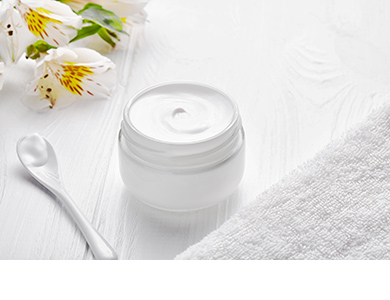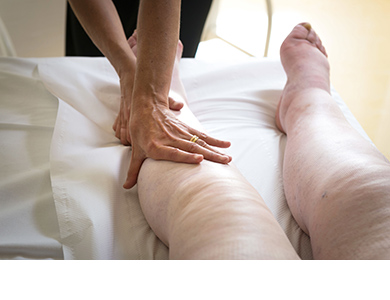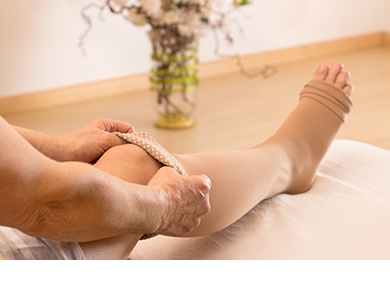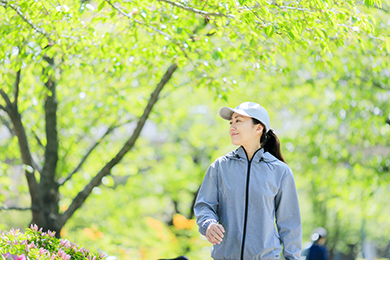6.Conservative therapy for lymphedema
As cancer survivors can comfortably live their life, our hospital opens an outpatient service of lymph-care with a total 6 certified nurses/physiotherapists for patients with lymphedema after cancer treatment, to support patients from various aspects. The outpatient service of lymph-care conducts conservative therapy (complex therapy).
Complex therapy of lymphedema appropriately combines the following therapies for individual symptoms. Although complete healing of lymphedema is difficult, it is possible to less likely develop edema by considering daily life. Also, if lymphedema is early detected and treated, some patients can nearly recover from the disease. Patients with a long history of the disease also can comfortably live by undergoing complex therapy with surgical treatment. It is important to continue care without giving up.
- Skin-care: Because the skin with edema is easily damaged and susceptible to inflammation, it is necessary to be careful about ? and infections such as athlete's foot. Moisturizing cream or appropriate ointment should be used. Lymphangitis or cellulitis caused by infection can lead to deterioration of edema; therefore, daily care is important.

- Medical manual lymph drainage (MLD): This is slow and gentle massage different from aesthetic drainage such as beauty treatment. In MLD, drainage is conducted to promote lymph fluid accumulated in the skin and subcutaneous tissue to be drained into normal lymph nodes. MLD has an effect to soften the hardened skin and improve condition of the skin. An important point in drainage is the difference in lymph flow between individuals. Based on the test results such as ICG lymphography (see the fifth column) or lymphoscintigraphy at the outpatient service of lymphedema, our hospital provides a guidance of appropriate drainage for each patient under cooperation with doctors.

- Compression therapy: Body fluid is likely to be accumulated in fingers and toes because of gravity. In order to prevent lymph fluid drained by lymph drainage from returning by influence of gravity, compression is sufficiently conducted. Elastic bandages, stockings, and sleeves are used. However, because materials that do not fit a patient' body may worsen symptoms, caution is needed. We try to propose the compression therapy tailored to the life-style of each patient.

- Exercise therapy under the compressed condition: Muscle exercise under the compressed condition activates movement of lymphatic vessels. Not hard exercise but the exercise that you can do every day should be continued. The following exercises that you can do in daily life are sufficient: walking, gripping/loosening the hands, bending/stretching the ankles or knees.

- Guidance of self-care: We provide the guidance of home self-care tailored to the individual life-style.

Conservative therapy will be regularly introduced in this column.
Outpatient service of lymph-care Kameda General Hospital
Responsible nurse
Yumiko Kerry/Akiko Ishibashi